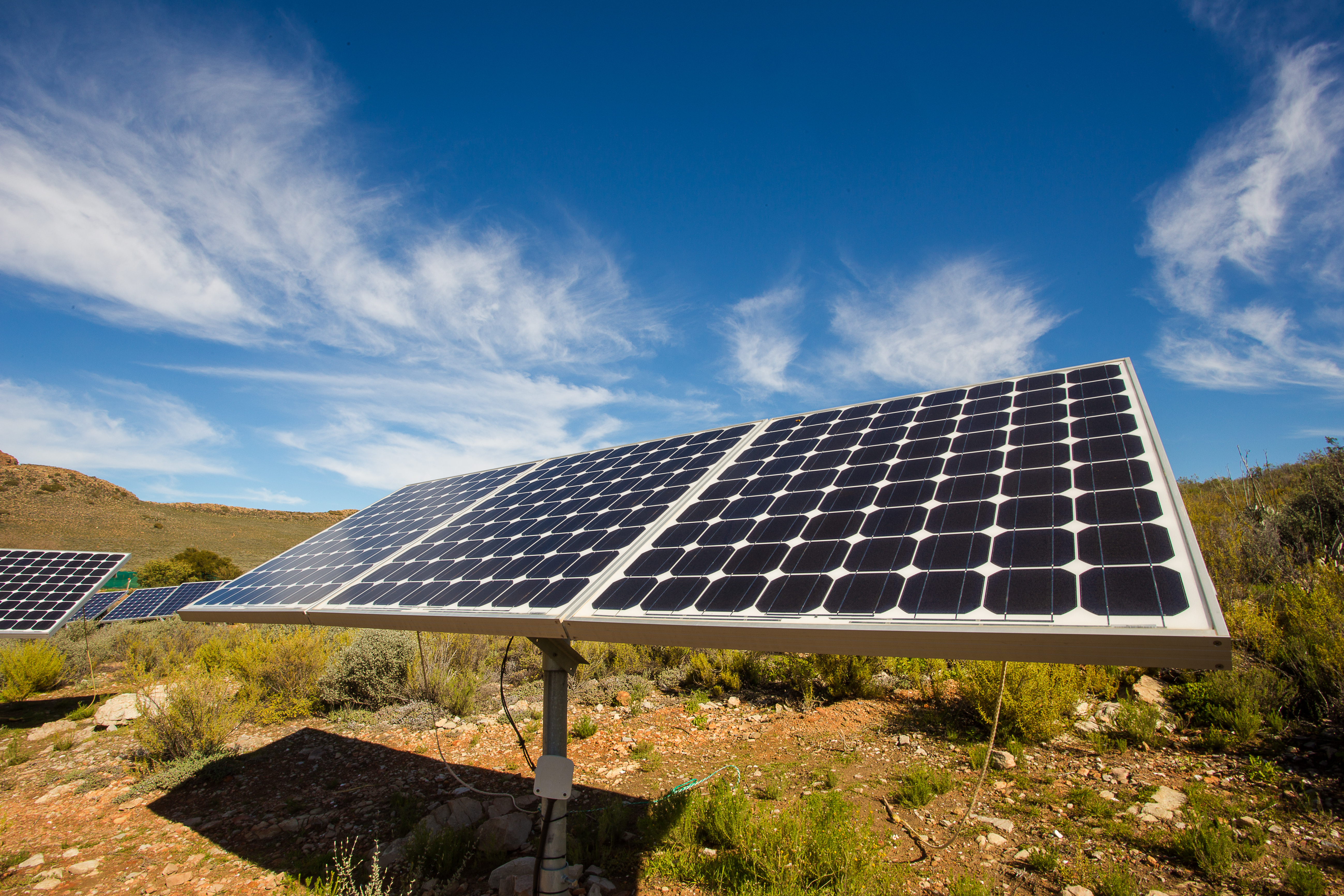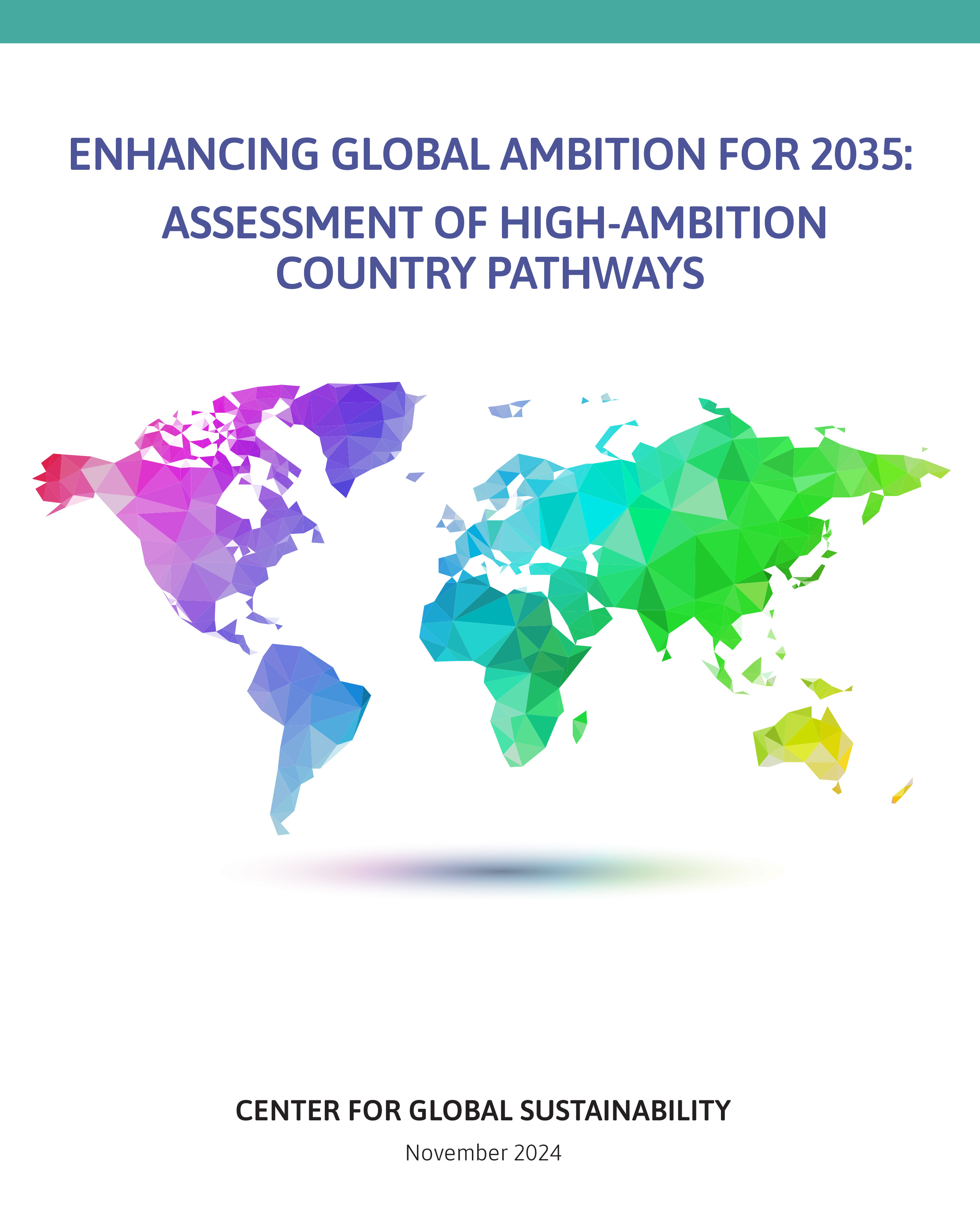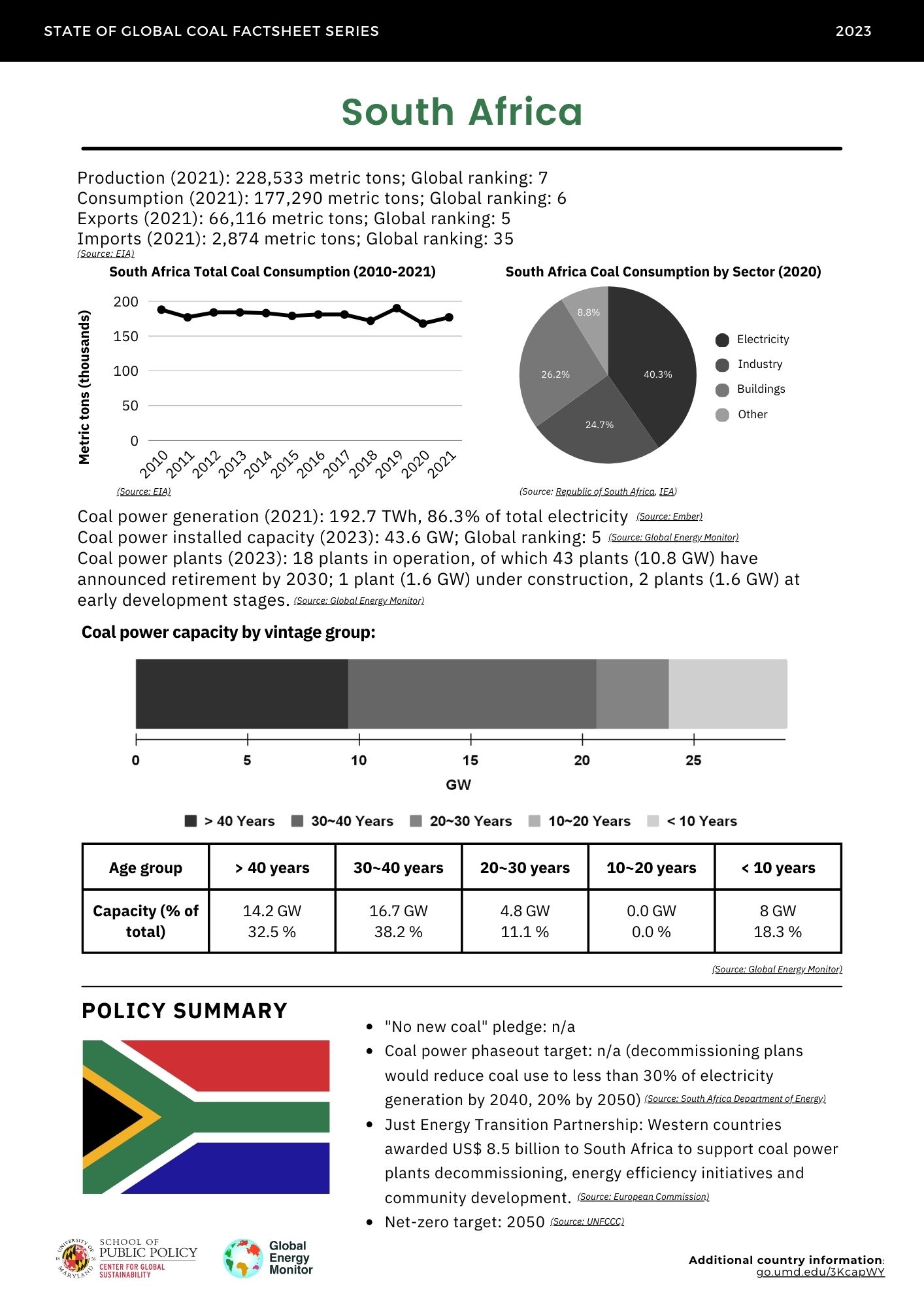Our High Ambition pathway for South Africa shows a 36-40% reduction in total greenhouse gas (GHG) emissions (including Land Use, Land Use Change and Forestry (LULUCF)) by 2035 from 2023 levels. As of September 1, 2025, South Africa has not announced its 2035 Nationally Determined Contribution (NDC). Its 2030 NDC target commits to an absolute GHG emissions range of 350-420 MtCO₂e, including LULUCF.1 South Africa’s overall GHG emissions, including LULUCF, peaked in 2008 and declined by 15% through 2023.2 Meeting its 2030 NDC target requires a 7% to 23% reduction by 2030 from 2023 levels, equivalent to an average annual reduction of 1%–4%. South Africa has also committed to achieving net-zero emissions by 2050.
Emissions in South Africa primarily stem from the power sector, accounting for 50% of GHG emissions (excluding LULUCF) in 2022, followed by methane (14%) and other energy supply CO2 (13%).2 As CO2 from the power, industry, and other energy supply sectors make up a majority of South Africa’s GHG emissions, mitigation in these sectors is critical to achieving emissions reduction targets. Key strategies include: accelerating the deployment of renewable energy beyond existing targets; cancelling and decommissioning coal and limiting gas expansion; restricting coal mine expansion; and targeting methane abatement in underground and abandoned coal mines and the waste sector through advanced disposal and treatment technologies and improved collection logistics.
2035 Target: Total GHG Emissions Reductions
via CGS High Ambition Pathways
-45 to -49%
Relative to Estimated Peak Year
2008*
Official 2035 NDC target
Not announced
Official 2030 NDC target
350-420 MtCO2eˣ
Net zero target
2050
A High Ambition 2035 target for South Africa shows a 36-40% reduction in total GHG emissions, including LULUCF, from 2023 levels (Figure 1). In this High Ambition pathway, GHG emissions decline rapidly to meet the NDC reduction target by 2030, as emissions decrease by 15-19% compared to 2023, and then toward net zero by 2050.
South Africa’s GHG emissions, including LULUCF, peaked in 2008 and declined by 15% by 2023.2 The 2021 NDC, which targets an absolute GHG emissions range of 350-420 MtCO₂e by 2030 (including LULUCF),1 implies a 7% to 23% reduction by 2030 from 2023 levels. Achieving this target requires emissions reductions through 2030, equivalent to an average annual reduction of 1%–4% between 2023 and 2030. The current target presents a wide range of emission outcomes. While the upper limit (420 MtCO₂e) lacks ambition, the lower limit (350-420 MtCO₂e) reflects accelerated ambition compared to the 1% annual reduction rate of the past decade.
As of 2024, South Africa’s electricity generation is dominated by coal power, accounting for 83% of total generation (other fossil fuels comprise 1%) (Figure 2).3 Currently, 34% of coal capacity in South Africa is over 40 years old, 0.8 GW is under construction, and 1.5 GW is in pre-construction stages.7 Renewables comprised 13% of total generation in 2024, with 8% from solar and 4% from wind, while nuclear accounted for the remaining 3%.3 As electricity generation makes up nearly half of South Africa’s total GHG emissions, it also contributes to the majority of emissions reductions through 2035.
Under the High Ambition scenario, 88% of South Africa’s power comes from renewable generation by 2035, achieved by accelerating renewable buildouts, significantly reducing coal generation, and canceling coal projects. Specifically, power sector transitions under the High Ambition pathway include:
- Increasing the share of solar and wind from 12% in 2024 to 62% by 2030 and 86% by 2035, with an average buildout of 9 GW/year from 2025 to 2030, and 10 GW/year from 2030 to 2035.
- Reducing the share of coal in the total generation mix to 9% by 2035, representing an 85% reduction in coal generation compared to 2024 levels.
- Cancelling the 1.5 GW of coal power plants in pre-construction stages.7
South Africa is the 5th largest coal exporter in the world.9 Although coal mining does not constitute a significant portion of GDP, it has important downstream linkages to other sectors, including transportation, petrochemicals, and electricity generation.10 Transitioning away from coal and reducing reliance on aging coal power plants. is a crucial step in enhancing South Africa’s climate ambition and energy security. Under our High Ambition pathway for South Africa, domestic coal demand declines by 42% by 2030 and 68% by 2035 from the 2024 level, while gas demand increases by 39% and 57% (at very low absolute levels), and oil demand increases by 19% and 17%, respectively (Figure 3).
Citations
Republic of South Africa. South Africa First Nationally Determined Contribution Under the Paris Agreement.
https://unfccc.int/sites/default/files/NDC/2022-06/South%20Africa%20updated%20first%20NDC%20September%202021.pdf (2021).
Gütschow, J., Pflüger, M. & Busch, D. The PRIMAP-hist national historical emissions time series (1750-2023) v2.6.1. Zenodo
https://doi.org/10.5281/zenodo.15016289 (2025).
Ember. Electricity Data Explorer - Open Source Global Electricity Data. Ember (2025).
Hoesly, R. et al. CEDS v_2025_03_18 Gridded Data 0.5 degree. Zenodo (2025).
NGFS. NGFS Climate Scenarios for Central Banks and Supervisors - Phase V. The Central Banks and Supervisors Network for Greening the Financial System (NGFS) (2024).
NGFS. NGFS Scenarios Portal. Network for Greening the Financial System (NGFS)
https://www.ngfs.net/ngfs-scenarios-portal/ (2024).
GEM. Global Coal Plant Tracker (GCPT). Global Energy Monitor (GEM) (2025).
KPMG & Kearney. Statistical Review of World Energy, 73rd Edition. Energy Insitute
https://www.energyinst.org/statistical-review/resources-and-data-downloads (2024).
South Africa - Countries & Regions. IEA
https://www.iea.org/countries/south-africa/coal (2022).
Bhorat, H., Kupeta, T., Martin, L. & Steenkamp, F. Just Transition and the Labour Market in South Africa.
https://oms-www.files.svdcdn.com/production/downloads/reports/Just-Transition-and-the-Labout-Market-in-South-Africa.pdf (2024).
Our Work


